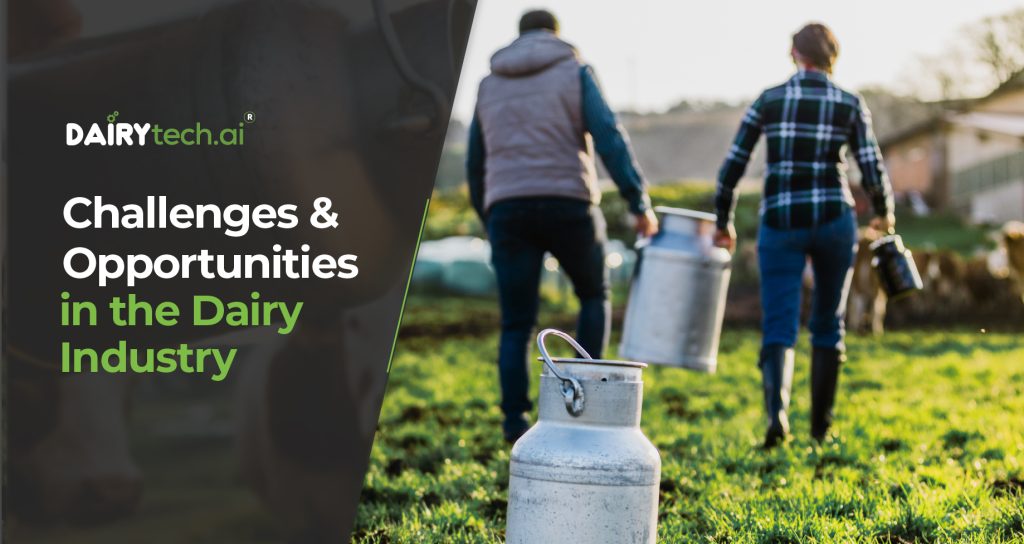Challenges and Opportunities in the Dairy Industry

In the dairy supply chain, it is an excellent time to innovate. In order to survive and grow today and in the future, the dairy sector must be aware of a number of new developments that will have an influence on future dairy production and consumption.
We regularly scan the horizon for major trends that will influence businesses in the years ahead as part of our future work at Dairytech. These insights are used to assist firms and sectors in future-proofing themselves by implementing the appropriate long-term plans.
The pattern is clear: more herds and fewer farms! However, this does not always imply that smaller family farms are doomed. Producers that are considering making a long-term commitment to the sector should be aware of the following four significant issues that might affect their survival and profitability:
- Production Efficiencies
- Cost Control
- Scale of Operation
- Debt
What Factors Contribute to the Profitability of Dairy Supply Chain?
Price – Milk and subsidy money per kilogram of quota varies substantially from farm to farm. Changing the protein/fat ratio can affect quota returns/kg. Producers will be forced to optimize profits from their quota holdings due to tighter profit margins and higher quota prices. On most dairy farms, milk revenue provides for about 85 percent of overall revenue.
Volume – Aim for big quantities of milk per cow and each person. Aim for a herd average milk production level of 10% or higher than the provincial norm. Milk production efficiency may be summed up in a single phrase: maximize dry matter intake. Identify and eliminate bottlenecks that limit intake.
Cost of Production (C.O.P.) – Once again, the cost of producing a liter of milk varies dramatically. To decide which section of the operation operates best, producers should track the success of each enterprise, such as dairy, herd replacements, and crops. Operations that are well-managed and low-cost will be better positioned to compete in the future. Use the 60 percent rule, which states that total costs, less depreciation, and interest payments, should be less than 60% of revenue. The Dairytech Dairy Farm Analytics is a useful tool for identifying areas where costs are out of control.
As we near the end of the century, many challenges and tensions face producers:
- more consolidated profit margins
- new technology
- future of supply management and percentage values
- increasing demands on net farm income (particularly family living costs)
Trends For the Dairy Industry in the Next Few Years
Dairy Innovation For Millennials
Millennials (those born between 1982 and 2004) are a discriminating set of shoppers — health-conscious eaters who value their meals as much as their health. In reality, the majority of people (63%) believe that food and drink may help them enhance their health. As a consequence, millennials are looking for healthy, on-the-go solutions that not only fit their hectic schedules but also deliver nutritious food.
Traceability and Transparency
Rapidly growing dairy businesses need to focus on transparency with their customers. Simultaneously, technologies such as sensors, data analytics, and digital technology are enabling businesses to make unprecedented use of data in order to make better decisions. Organizations have the chance to increase supply chain traceability, logistical efficiency, and supply chain risk visibility.
A Net Positive Approach to Dairy Agriculture
The dairy supply chain’s future might be Net-Zero. This is a significant step in combating climate change. We have reached “peak everything,” from soil depletion to water stress to fast extinction rates. Focusing on growing climate-smart agricultural programs is critical in our quest to achieve net-zero greenhouse gas emissions by 2050, and it will help lower the carbon footprint of many of our goods.
Today, 2.1 billion people, nearly 30% of the world’s population, are either obese or overweight. A further 1.5 billion suffer from starvation and malnutrition. A number of dairy farms are beginning to embrace sustainable nutrition as a powerful guiding concept to better understand and act on the linkages between agriculture, the environment, food, nutrition, and health. This is critical for hastening progress toward a sustainable food system – and the UN’s 2030 Sustainable Development Goals.
In summary, the dairy industry is highly effective, very efficient, and a large part of the economy. We believe producers who are willing to adapt to change have good reason to be optimistic about their future.

